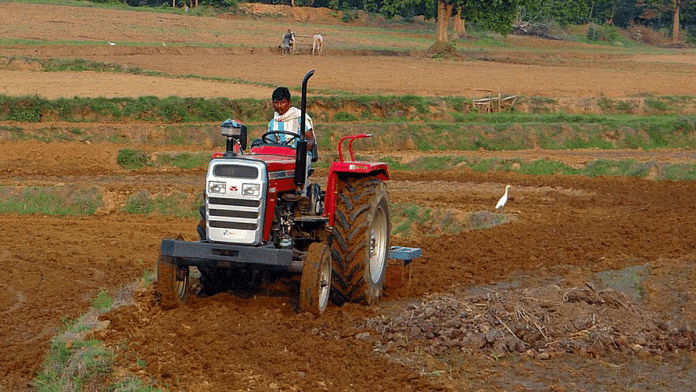New Delhi: A grievance received by the Prime Minister’s Office (PMO) in 2021 has led to a major reform in land governance in the country. Citizens will soon be able to access land records maintained in local languages by state governments in 22 languages. The Ministry of Rural Development is preparing for a pan-India rollout of the project this year, ThePrint has learnt.
“The project was conceived on the direction of the Prime Minister’s Office following a grievance received in 2021 regarding difficulty faced in accessing land records due to the linguistic barrier,” said Sonmoni Borah, Joint Secretary, Department of Land Resources, Rural Development Ministry.
In March 2022, the rural development minister Shandilya Giriraj Singh announced the project and directed the department to implement it in a time-bound manner. “The Pan-India rollout of multilingual land records project is likely by June-July and will be decided by the rural development minister soon,” he said.
The pilot project was launched last year in seven states — Maharashtra, Bihar, Puducherry, Gujarat, Tripura, Tamil Nadu and Uttar Pradesh — and the Union territory of Jammu and Kashmir.
Currently, Record of Rights (RoR) — which has details such as name, size of the plot and location of a land holding in any part of the country — is maintained by state governments in their local language. Ministry officials say that due to the linguistic barrier, people often face difficulty while selling or purchasing property in another state. In case of judicial matters, they have to get the document translated.
“With transliteration done in all Indian Scheduled 22 languages in the first phase, it will widen the reach of RoR…to all people and ensure ease of doing business and of living…. People will be able to access land records in a language of their choice without going through the hassle of getting it translated,” said Borah.
The ministry had roped in the Centre for Development of Advanced Computing (C-DAC), Pune, under the Ministry of Electronics and Information Technology (MeitY), to transliterate the RoRs.
While in most states, the land records will be available in 22 languages, officials said that in a few big states, because of lack of adequate staff strength, the land records will be initially available in six languages.
“As it is a big exercise, in some states we may initially provide access to land records in six languages. It will be mandatory for states to provide the land records in Hindi, English and a local language. They will have an option to choose three other languages in addition to this. For example, Jammu and Kashmir has transliterated records into five languages in the first phase,” said Borah.
Also Read: What is Bhu-Aadhaar? A unique ID for land that aims to check fraud, benami transactions
‘Will support interoperability of land data’
Under the Digital India Land Records Modernization Programme (DILRMP), the central government is getting all land-related data computerised apart from following other measures, such as computerisation of revenue courts. While land records are being integrated with cadastral maps, linguistic barriers pose a hurdle in interoperability of land-related data.
“This will support interoperability of data as linguistic barriers pose challenges in data sharing and analytics of pan-India systems. This will unlock potential of land parcels, otherwise highly localised, and make a positive impact on the economy,” said Borah.
Under DILRMP, the ministry is also implementing the project to give Unique Land Parcel Identification Number (ULPIN) to each land parcel in the country. It is a unique 14-digit alpha-numeric identity, also called Bhu-Aadhaar, with longitude and latitude coordinates of the land parcel. It is based on detailed surveys and geo-referenced cadastral maps.
(Edited by Zinnia Ray Chaudhuri)
Also Read: Budget 2023 for tech sector: Digital India funds slashed, PAN ‘common identifier’, KYCs simplified



